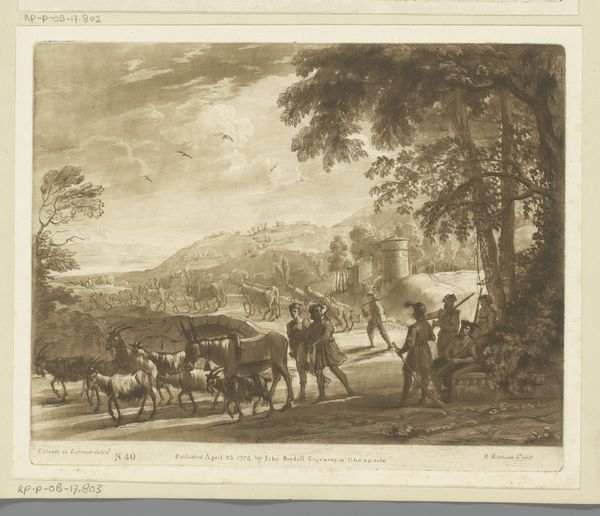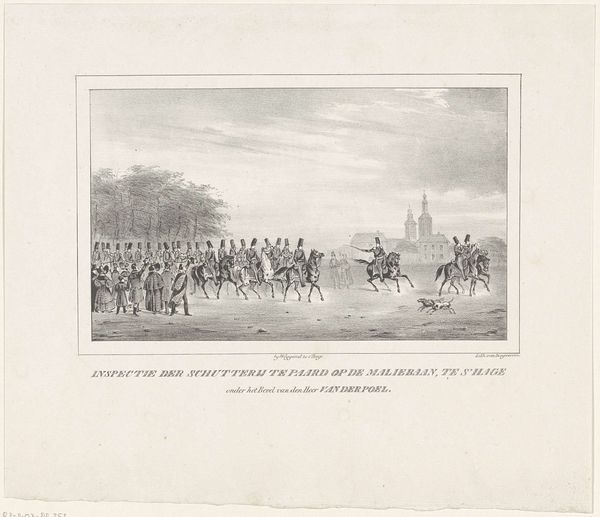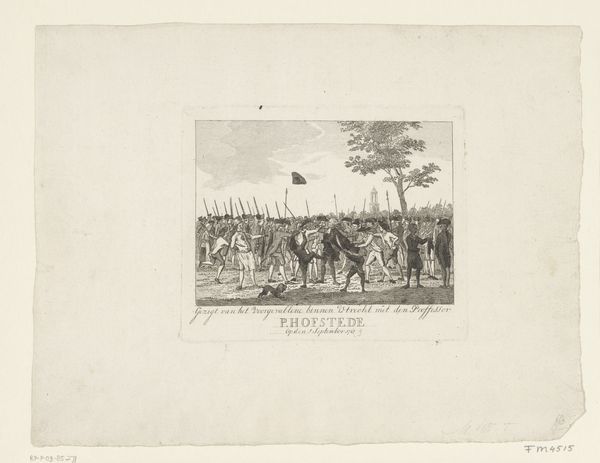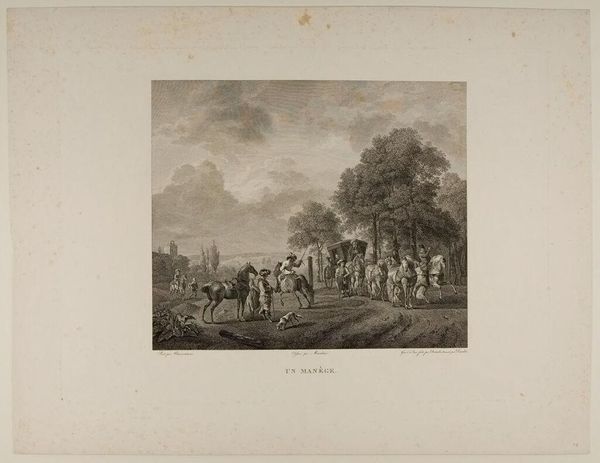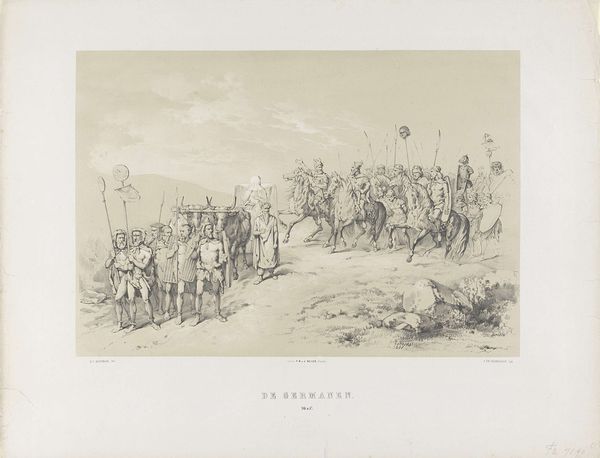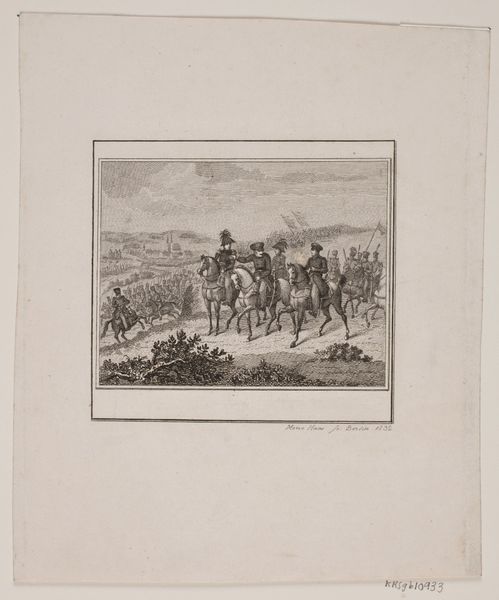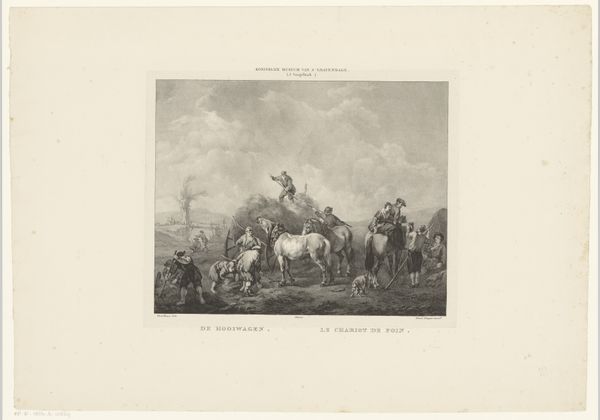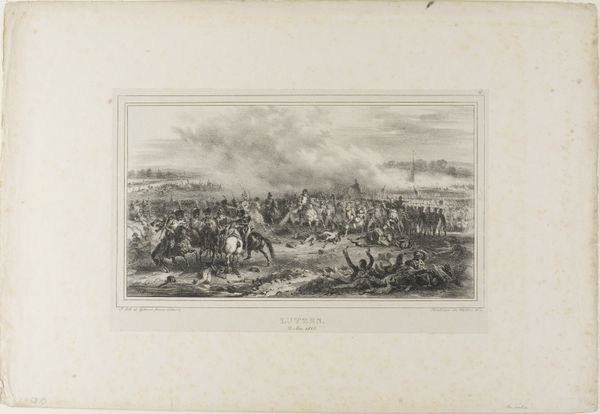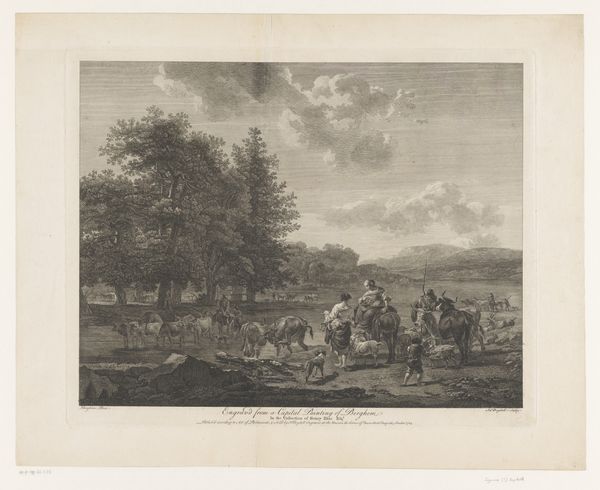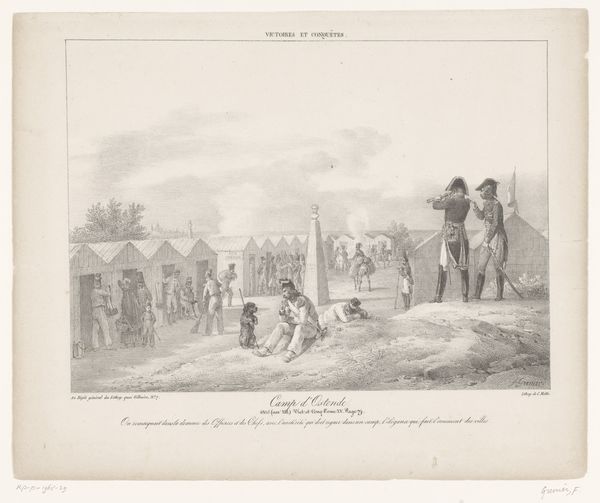
print, engraving
#
pencil drawn
#
ink paper printed
# print
#
landscape
#
genre-painting
#
engraving
Dimensions: height 270 mm, width 355 mm
Copyright: Rijks Museum: Open Domain
Editor: Here we have "Rijtuig wordt staande gehouden," or "Carriage Being Stopped," an engraving dating roughly from 1822 to 1863. It's by Carel Christiaan Antony Last and held at the Rijksmuseum. The composition is quite dynamic, a landscape teeming with figures both human and equine. What do you see in the lines and forms, considered apart from the narrative it suggests? Curator: Precisely, let's bracket out the anecdotal for a moment. The use of line is quite intriguing. Notice the contrast between the densely packed, almost chaotic lines suggesting the trees on the right, versus the more open, deliberate strokes that define the figures in the foreground. How do these contrasting applications of line influence your perception of depth within the image? Editor: It's almost as though the figures are spotlighted by the detail, pushing them forward. The background then recedes. So, the texture of the line dictates spatial relationships within the composition? Curator: Indeed. And consider the use of value, from the bright whites of the paper to the deep blacks in the foliage. These choices produce a strong contrast that draws the eye. Ignoring what it represents for a moment, is there a clear hierarchy in the use of dark and light tones? Editor: Yes, the lightest area is definitely centered on the horses, particularly those pulling the carriage. Is that a focal point driven purely by tonal manipulation? Curator: To a large degree, yes. Last harnesses light to create an order independent of the scene, itself. What might we learn by applying a structuralist lens to such strategic compositional decisions? Editor: That by reducing the image to its basic formal elements, we understand the relationships and order the artist imposes – a kind of visual grammar in itself. It gives a structure, independent of subject matter, by which we might judge it? I see that formal structure now, underlying the more illustrative qualities of the print. Curator: Precisely! We discover something essential by setting aside content. It realigns my perception, somehow.
Comments
No comments
Be the first to comment and join the conversation on the ultimate creative platform.
